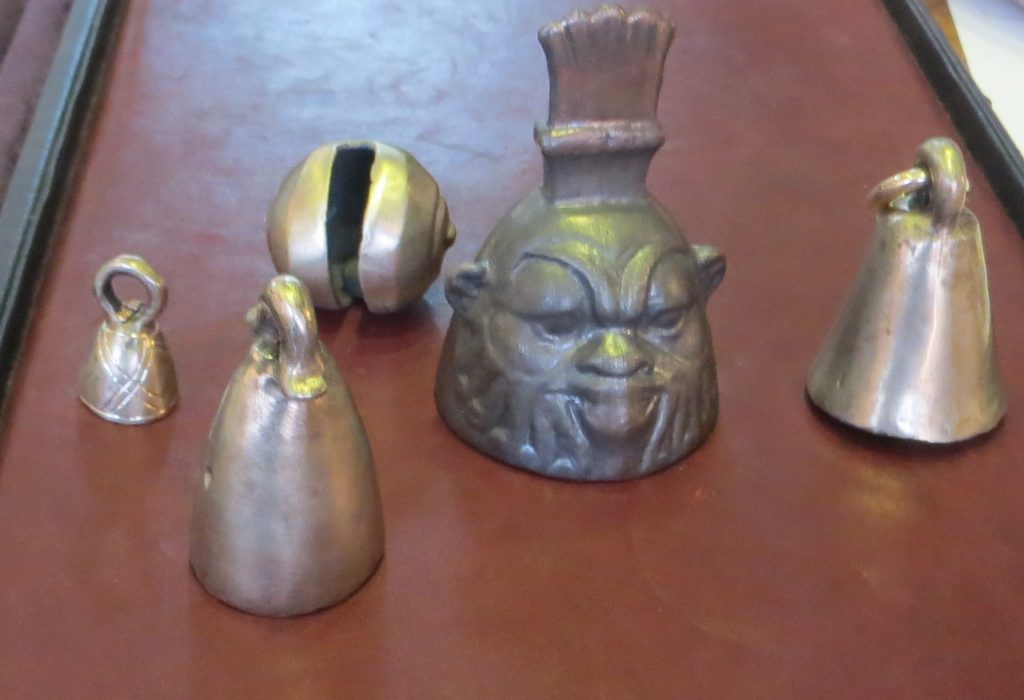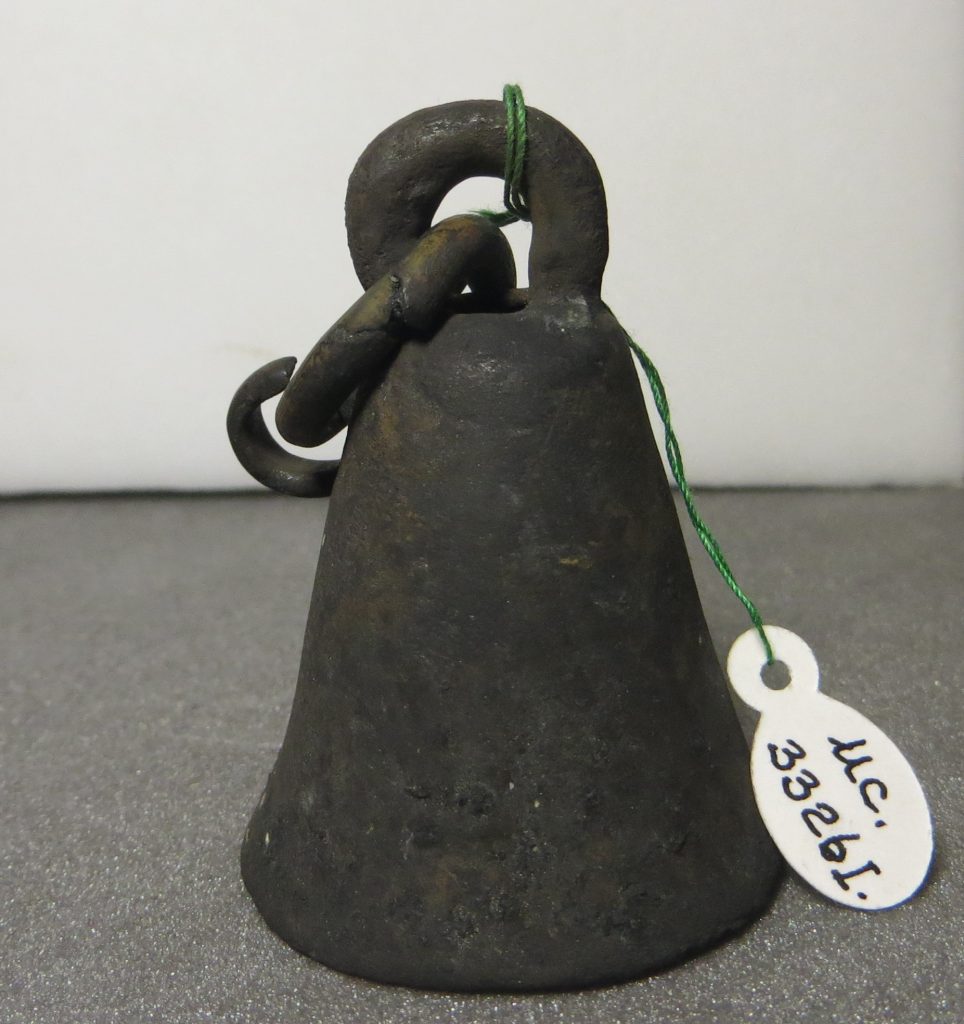We have an update on the status of our metal instrument replicas! To recap, local Canterbury jeweller Justin Richardson is making replicas of a number of the metal Roman bells and cymbals in the Petrie Museum, using alloys and manufacturing methods as close to the originals as possible. The aim is to play these replica instruments to reveal the sounds of Roman Egypt, and to see how different production methods and materials might have affected their sound. We recently met up with Justin to get a progress update.

Justin Richardson with some of the bell and cymbal replicas. Photo: Ellen Swift.
The process began with the 3D laser scanning of our selected objects – this data was used to make wax models which were then used to create casts in metal. This, along with sand-casting (discussed in our other blog post here), would have been the most common methods of casting metal in Roman Egypt.
There were however a few problems encountered along the way. Some of the objects we scanned created models where the walls of the bells and cymbals were very thin. This is because during their lives the surfaces of the instruments had worn down through use. However, this thinness resulted in castings that had large holes and with sections missing. We therefore had to edit our scanned models to increase the thickness of the instrument walls in places, thus ensuring a successful cast during the next attempt. This does however mean that the finished replicas will represent the instruments as they had been when new, rather than the older worn versions we now have in the museum collection.

Another challenge was presented by the clappers inside the bells – these are the articulated pieces of metal that cause the bell to ring when they touch the walls. The clappers could not be laser scanned as they moved around, and in a couple of examples were no longer extant at all. Instead we had to rely on what we could see by eye both in terms of style of clapper and material. It appears that both bronze and iron were used for clappers, with several different styles in use – therefore we have tried out a range of examples in the replica bells to reflect this. The cymbals also presented us with a range of different production techniques and materials. Brass, bronze, and copper are all represented, as are the techniques of both casting and hammering. For our replicas, there will be a pair made in spun brass, and a pair cast in bronze – this will allow us to see what kind of difference there is in sound quality.

Justin and his team are now adding the final touches to the replicas. One of the bells had a ring that was originally gilded (as identified by the XRF analysis) so that element will also be replicated. The cymbals also need metal attachments added in the form of U-shaped metal handles. Finally, several of the bells were attached to metal bracelets, which are also being made. These bracelets are made of iron, but we cannot source iron of suitable dimensions to use for this. Instead Justin will be using steel, which is more difficult to work with than the original iron.

Once the replicas are completed, our next step is to create a recording off them being played. We will be using software that can mimic the acoustic qualities of any space, so we hope to replicate the sound of music as played in typical houses known archaeologically from Roman Egypt!
